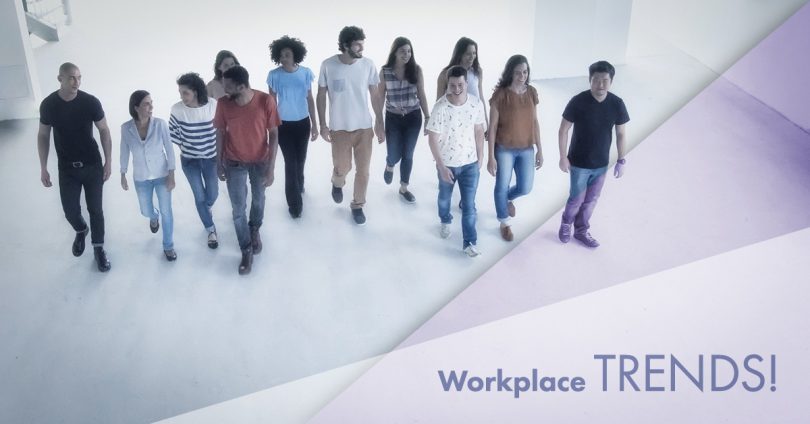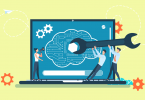Nothing stands still. Times are a-changing and so is the world. How can the workplace remain unaffected? Technology today is driving trends in the world around us. As business cycles are moving at accelerating speeds, the global community is coming together into a constantly connected, vibrant network.
In the meantime, companies are bracing themselves for an influx of millennials who are expected transform the work environment in almost every aspect, shaping ‘the 2020 workplace’.
And what exactly is this?
According to the 2020 workplace theory, over 36% of the workforce will consist of people born after the baby boomer generation. This fact alone means that the workplace can change dramatically, facing the collision of generations, but at the same time will boast a more diverse workforce.
But what does this practically mean for the future of your organization and how can you prepare for the upcoming workplace trends?
The 2020 Workplace Demographics
Before we go into sharing tips on how you can welcome the 2020 workplace in full armor, we need to pay closer attention to what this change means in practice.
The majority of workforce 2020 predictions focus on the way that the average workplace will change with regard to demographics. According to those:
1) Employees are projected to stay longer in the workforce in the coming years, which means that basically five generations of workers from diverse backgrounds will work together in collaborative teams.
2) Globalization and virtual workplaces will also play an increasing role in the changing landscape of the workplace, causing more fluid shifts and flows of talent.
3) Cultural diversity will eventually mean that businesses will need to incorporate a broader set of values than today. This means that companies will have to radically rethink all of their internal interactions, especially those involving their human capital: namely how to approach, deploy, develop and retain people.
So, in order to ensure that your business adapts and thrives, you need to learn to be flexible. Let’s explore what you need to change to keep up with the demands of the workforce that are currently reshaping the business landscape.
1. Create Compelling Employee Experiences
Unlike previous generations, millennials look further than job stability, competitive salaries and benefits to be committed and loyal to a company. They are driven by a sense of shared purpose, which means that they need to have a strong sense of their part in the ‘bigger picture’ to bring their best results to the workplace.
And although until now businesses were mostly focused on satisfying key consumer needs, what becomes clear when examining the global workforce trends by 2020 is that employee experience is equally important for company success.
This is easily seen in a number of tech giants and industry leaders like Google, Facebook, SAP, Tumblr, Intuit, and others. These brands build their entire core structure and organizational ethos around the experience of their employees.
State-of-the-art office campuses, flexible hours and resting rooms are only some of the methods these enterprises leverage to keep their employee experience great.
And more importantly, all of these are fast becoming the norm in response to today’s workplace trends for companies that understand millennials and know that the 2020 workplace needs to be more dynamic, purpose-driven and versatile.
Currently, there is a significant gap between millennial workforce needs and what the workplace offers. If companies want to harness the massive potential of this future workforce, they need to start incorporating the tools and technologies that enable their productivity.
This is all fine and well, but what do you need to do in practice to keep up with the workplace trends that are speeding towards us all?
The first thing is to work on a personalized relationship with your employees. HR departments are now turning to research principles, such as design thinking and sentiment analysis to better understand and serve the needs of the 2020 workforce.
How exactly does this work? Design thinking and sentiment analysis are used to innovate in the workplace and increase employee engagement. Intranet-based interaction systems are now the norm for a lot of businesses that see better performance results from engaging their employees in their internal social platform.
Millennials are all about convenience, connectivity, and functionality. They expect to learn and work the same way that they entertain themselves – online.
Giving them fast and easy access to a system where they can receive the training and mentoring they need on demand will help them (and your business) thrive in the 2020 workplace.

2. Include Artificial Intelligence elements in a Blended Workforce
Technology is changing our lives in fundamental, profound ways. No news here, of course. We’ve known this for over two decades. However, with the rise of artificial intelligence and the proliferation of big data as a driver for business decisions (not to mention an important part of A.I. training), the changes are reaching
However, with the rise of artificial intelligence and the proliferation of big data as a driver for business decisions (not to mention an important part of A.I. training), the changes are reaching the office and making the way we work look nothing it did a few short years ago.
Naturally, this is already resulting in the death of the single skillset. As documented by David Deming, associate professor of Education and Economics at Harvard University, we now see that automation does not translate to higher unemployment rates.
On the contrary – as machines take over mundane tasks, employers expect more complex, creative and varied functions from their people.
Expanding on the death of a single skillset, companies are increasingly opting to apply workplace trends with new technologies that allow them to streamline repetitive tasks. Organizations like IBM and a number of startups are rolling out intelligent assistants, or chatbots, to handle the early stages of employee recruitment, answer mundane HR questions or personalize learning experiences.
Organizations like IBM and a number of startups are rolling out intelligent assistants, or chatbots, to handle the early stages of employee recruitment, answer mundane HR questions or personalize learning experiences.
This isn’t a gimmick or a shortcut, either: these workplace trends are correlated with the expectations of millennials both as consumers and as employees. According to research, more than 22% of millennials expect a response within 10 minutes of reaching out to a consumer brand or their employer internally when they need mentoring or assistance.
Chatbots deliver unmatched personalized learning and development for employees. Come 2020, they will be critically important to the 3.7 million workers, or 2.8% of the workforce, who are expected to work remotely at least half of the time and will not have direct access to an HR department.
Another important skillset that foreseeable workplace trends bring to the stage is data literacy, meaning the ability to work with and interpret data in meaningful ways. Data are increasingly the driving force behind not only commercial decisions, but choices regarding user experience and really, all facets of your product and company life.
Being able to harness the power of the numbers is a really valuable skill today and it will only increase in significance in the years to come.
Data are increasingly the driving force behind not only commercial decisions, but choices regarding user experience and really, all facets of your product and company life. Being able to harness the power of the numbers is a really valuable skill today and it will only increase in significance in the years to come.
To remain valuable as employees, training for 2020 workplace trends will need to focus on developing a combination of technological and interpersonal skills to span the functions of finance, marketing, operations, supply chain and Human Resources.
The Future of Work is here!
With companies struggling to develop a learning culture and failing to provide the mentoring and formal training that millennials need to thrive in the workplace, this can spell trouble for future growth.
More and more businesses are finding it quite challenging to effectively manage talent or inspire and empower employees. The bottom line is that companies are simply unprepared for how flexible the 2020 workforce will be.
A simple overview of the future workplace experience shows a much more dynamic, fluid and digital environment, one that is able to answer multiple requirements with single, one-stop solutions.
So, as the global workplace is being reshaped, all you have to do to keep growing is to turn to your employees and adapt to the technological advances that are outlined in this brief but focused, overview of coming workplace trends.
So, as the global workplace is being reshaped, all you have to do to keep growing is to turn to your employees and adapt to the technological advances that are outlined in this brief but focused, overview of coming workplace trends.





